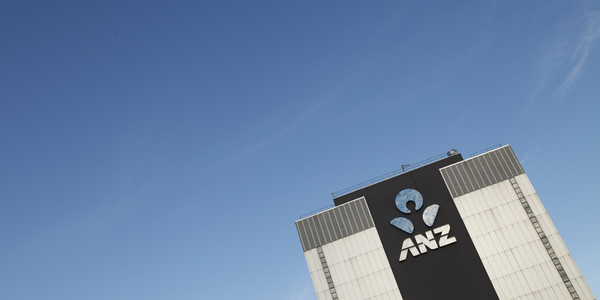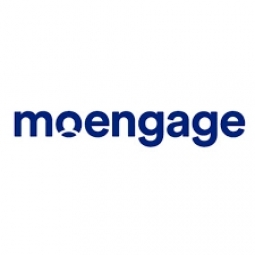技术
- 网络与连接 - 5G
- 平台即服务 (PaaS) - 应用开发平台
适用功能
- 销售与市场营销
用例
- 机器间付款
关于客户
Ayopop 是一家快速发展的移动账单支付平台,总部位于印度尼西亚。该公司为用户提供一个通过移动设备方便地支付账单的平台。 Ayopop 旨在通过减少购物车放弃和增加交易来增加活跃用户群并推动增长。该公司专注于利用人工智能和营销自动化等先进技术来提高用户参与度和保留率。 Ayopop 的目标是提供无缝且个性化的用户体验,鼓励用户完成交易并在一生中保持与平台的互动。
挑战
Ayopop 是印度尼西亚发展最快的移动账单支付平台,在增加活跃用户群、减少购物车放弃和推动增长方面面临着重大挑战。该公司需要识别中途放弃交易的用户,并找到一种方法让他们回来完成交易。此外,Ayopop 希望利用营销自动化解决方案不仅让这些用户回来,而且让他们在一生中保持参与度。我们面临的挑战是找到一个能够有效解决这些问题并帮助 Ayopop 实现其业务目标的解决方案。
解决方案
Ayopop 求助于 MoEngage 的人工智能营销参与来应对挑战。该公司使用 MoEngage 的 Sherpa,该平台允许 Ayopop 通过与用户的个性化互动来推动更高的转化和增长。 Ayopop 使用 Sherpa 向三个细分的用户发送个性化推送通知。这些通知旨在吸引用户并通过持续参与推动增长。对于放弃购物车,两小时后向未完成交易的用户发送个性化推送通知。这些通知是个性化的,包含有关用户正在搜索的类似产品的提醒和推荐。 Sherpa 优化了推送通知的多种变体,并将转化目标提高了 31%。对于交叉销售,Sherpa 使 Ayopop 能够向用户提供个性化建议,以实现持续参与。最后,对于产品提醒,通知会发送给订阅即将结束的用户。
运营影响
数量效益

Case Study missing?
Start adding your own!
Register with your work email and create a new case study profile for your business.
相关案例.

Case Study
Creating an Agile Environment to Drive Growth in the IoT
Numerex needed to provide innovative products and service offerings and adapt to the explosive growth in the IoT/M2M ecosystem. As Numerex was transforming into delivering on-demand offerings to its wide range of markets, they realized their back office systems weren’t capable of providing flexible feature sets, critical to helping turn up new product catalogue configurations to close deals and better manage service offerings. An example of this needed flexibility would allow a Numerex customer to buy devices in bulk yet only pay for those that actively use data on the network. Their systems required significant development efforts to introduce new service offerings such as this. They had segregated billing systems that didn’t scale for high volume processing requirements. Numerex was also growing via M&As, which brought the additional challenges of outdated technologies and a variety of disparate billing systems that didn’t talk to each other, resulting in complex operational expenditures and integration requirements. It became so dire that Numerex was forced to implement manual billing processes for certain lines of business.

Case Study
The Hub of Cloud Communications
SimpleSignal delivers services through multiple channels, whether that’s through wholesale partners or white labeling or directly to an end user. It’s a wide range of products - large scope - and offered both as usage based and subscription based services. The platform of choice had to have the qualities of traditional telecommunications billing but also the innovation, flexibility and scalability of Software-as-a-Service (SaaS) billing.

Case Study
ANZ Bank's Digital Transformation with Nintex Advanced Workflow
ANZ Bank, one of the top 50 banks in the world and the fastest-growing bank in Indonesia, was facing a challenge with its rapidly increasing transaction volume. The bank's existing business processes and workflow were becoming overwhelmed. Like most banks in Indonesia, ANZ was manually handling document submission and verification. Customers filled out paper loan applications and supporting documents, then delivered them to bank branches by mail or courier. Branch officers traveled to the bank’s headquarters or used postal mail, email, and phone calls to submit loan documents for verification. Lost or inaccurate documents created more emails and phone calls. Additionally, ANZ had to adhere to strict verification and financial regulations, including the Foreign Accounts Compliance Act. This act requires that all banks outside the United States provide key information about U.S. clients, including citizenship validation, to the Internal Revenue Service–a complex yet crucial process.

Case Study
Citibanamex's Digital Transformation: A Mobile-First Strategy with OpenLegacy
Citibanamex, a part of Citibank corporation, was facing a challenge in keeping up with the rapidly evolving Mexican consumer banking market. The bank's primary goal was to deliver a seamless, personalized user experience across both digital and traditional channels. The bank's mobile application rating was a mere 2.0 out of 5, indicating a need for innovative digital offerings to improve the user experience. The bank's core technology stack was a proprietary mainframe system, which ran core business applications such as payments and account management. Over time, modernization projects led to an increasing spiral of complexity with various tools, mainframe gateways, ESBs, middleware, dispatchers, routers, and messaging queues. Each system had a different way of handling the backend legacy platform, making it harder and more cumbersome to integrate with legacy applications. After years of unsuccessful, costly integration attempts, Citibanamex was left with the same needs and challenges, only exacerbated. The focus shifted to the Customer Digital Experience and the End-User Journey, and they needed a partner that could help them rapidly develop and deploy innovative customer offerings on top of their core systems.
Case Study
BBVA: Leveraging Geospatial Data for Innovative Customer Services
BBVA, a global banking and financial services group, was faced with the challenge of adapting to the rapidly changing landscape of digital payments. The bank noticed a significant increase in mobile payments, particularly during the COVID-19 pandemic, with the percentage of customers using this method rising from 4.4% to 23%. As part of its digital transformation journey, BBVA aimed to offer its customers an exceptional range of services and a great banking experience. The bank was already using Google Maps Platform to help customers find their nearest branch or ATM locations, but it wanted to further leverage the potential of Google Maps Platform solutions. BBVA's mobile banking app was used by 71% of its customers in Spain, and was accessed more than 120 million times a month. The bank wanted to provide more information about each customer transaction to offer a better financial experience for digital customers.








